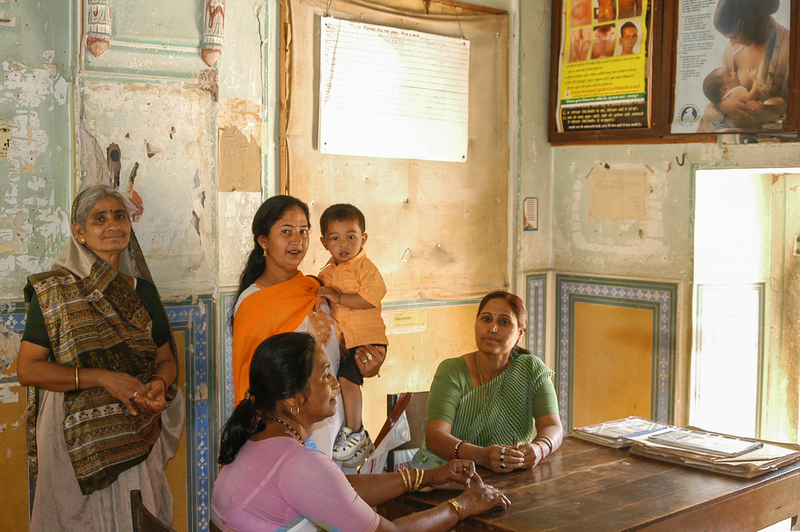4 incredible innovations revolutionising rural healthcare in India
M3 India Newsdesk May 28, 2018
India is a hub of frugal innovations, some of it born out of necessity and lack of availability, but some borne out of genuinely brilliant and simple ideas which solve complicated problems.

There are some truly remarkable innovations which help the underserved and isolated areas of our country where high quality healthcare is yet to reach due to a variety of factors. Here, we discuss some innovations which can transform critical elements of healthcare in rural India:
O2Matic
Non-availability of oxygen cylinders (due to intermittent supply, lack of transportation due to bad roads or absence of skilled personnel to operate the cylinders) is a critical issue in many rural hospitals/health care centers. The team behind O2-Matic came up with an idea of a durable and portable kit that can produce oxygen anytime. The kit is simple and does not require complex equipment.
O2Matic only has an outer reusable canister, a lid with an oxygen outlet that will be mounted on the canister and a replaceable cartridge, which will hold the salt compound and the catalyst required for the chemical reaction.
- When an emergency occurs, a user can unlock the lid from the canister, add tap water into the cartridge in the water provision tank, drop the cartridge into the canister and lock the lid again.
- Once locked, the cartridge is activated so that all the compounds mix and react in the closed canister to produce oxygen, which can be administered to the patient in need.
The whole process of activating the cylinder takes only a few seconds.
The unit also consists of a measuring jar with a provision to add water into the cartridge and the whole kit can be carried in a small bag. The device has some critical areas where it can be applied. It can be utilized during natural calamities, in rural areas with poor electricity, as an emergency kit in communities and hospitals and many other places.
Nitro boosters
This team of young scientists are working on a similar problem in India, the lack of anesthesia in rural hospitals that caused women to die during relatively simple procedures.
The team came up with an idea of utilizing India’s ubiquitous fertilizer plants, which have been strategically spread out across the country by the government to ensure access to fertilizers across the country. They found that fertilizer companies have a nearly 45% surplus of raw materials every day, products that are wasted due to a lack of use in the plant. They decided to use these by-products to produce nitrous oxide, a potent anesthetic.
Moreover, since this was a product which was manufactured from raw materials which were procured at much cheaper rates than usual, it was much cheaper than most anesthetics which were usually hard to procure in rural areas.
The cost reduction is nearly 93% due to the use of these cheaper raw materials. Moreover, since the 85 fertilizer plants in India are evenly distributed across geographical areas, the access barrier is greatly reduced for most rural areas.
This product can not only improve access to anesthetics, but also save on manufacturing and transportation for the actual anesthetic used in hospitals elsewhere, hence reducing emissions.
Aawaazz
This team was led by an ENT surgeon, which wanted to screen babies for hearing impairments.
The product they developed screens babies for hearing impairments which are often left undetected until around five years of age when they can cause a lot of disabilities and impairment which are actually mitigated by rehabilitation.
The product includes sensors and a software which can detect the baby’s eye and body movements, and check if it responds adequately to a sound stimulus. The software then calculates if this is within parameters of normalcy or notifies the user if there are hearing impairments of hearing loss.
The team noted that nearly 1.5 lakh children in India are born with hearing loss are born each year, and many need rehabilitations which they do not get due to the lack of diagnosis. Most importantly, this could be done with a smartphone, a device which could be used in rural India and which also did not need a lot of training. The software’s interpretation was enough, and it would be worked upon to keep it up-to-date to keep the parameters
Life Phone Plus
Intel and GE are two companies who are deeply involved in such technologies, where advanced diagnostics cannot work but the need for such technologies is growing as life spans are increasing and more and more people are facing lifestyle diseases as a result of growing age.
Life Phone Plus, is a unique diagnostic tool supported by Intel, which can be used to take electrocardiograms, monitor blood sugar, and send the reports to a nearby specialist without leaving the area.
In India, where people living in rural areas need to waste a day’s earnings to go to the doctor, the device utilizes cell phone signals and Bluetooth to send reports to the doctor and get their opinion and advice. The doctor can advise them to seek medical care, modify their diet or take certain medications if necessary.
Kumar Ranganathan, the team leader for Intel noted that the demand had been strong, and that people would continue to use it since it is a product providing important parameters for a diagnosis without having to leave the homes.
Many such innovations are now dotting India’s rural areas where conventional health systems cannot reach. Most companies, scientists and policy-makers have realized that India is a place unlike the West, where access to services can be ensured with much more ease, while in India, frugal innovations need to be developed, cutting out all extraneous features of products and devices.
-
Exclusive Write-ups & Webinars by KOLs
-
Daily Quiz by specialty
-
Paid Market Research Surveys
-
Case discussions, News & Journals' summaries